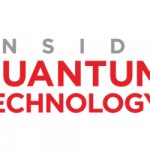Quantum News Briefs September 12: Morehouse College & UCLA researchers receive NSF Grant for quantum research; Wave Photonics Leads £500k Innovate UK-funded project to develop packaging solutions for quantum photonic integrated circuits; and MORE

Quantum News Briefs opens today with the announcement of an NSF Grant for Quantum Research being awarded to a research team from Morehouse College and UCLA, followed by news of the £500k Wave Photonics received from Innovate UK–Funded Project to Develop Packaging Solutions for Quantum Photonic Integrated Circuits. Next is another breakthrough from Riken whose researchers demonstrated full control of a three-qubit system and MORE.
*****
Researchers from UCLA, Morehouse College Receive NSF Grant for Quantum Research
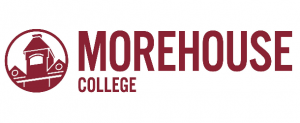 A physicist at Morehouse College in Atlanta and an engineer at the UCLA Samueli School of Engineering have received a three-year, $798,000 grant from the National Science Foundation for research in quantum electrodynamics, coupled with a leadership and trainee plan focusing on increasing access for students who are from populations that are historically underrepresented in science, technology, engineering and mathematics.
A physicist at Morehouse College in Atlanta and an engineer at the UCLA Samueli School of Engineering have received a three-year, $798,000 grant from the National Science Foundation for research in quantum electrodynamics, coupled with a leadership and trainee plan focusing on increasing access for students who are from populations that are historically underrepresented in science, technology, engineering and mathematics.
The grant will support the development of new techniques that can see and measure light waves precisely as they interact with each other and with molecules and individual atoms. The researchers aim to achieve such interactions at attosecond timescales — a quintillionth (one-billionth of one-billionth) of a second. These are where some of the fastest, most elusive quantum phenomena occur, which in turn determine functional material properties.
The principal investigator of the project is Wesley Sims, an assistant professor of physics at Morehouse and director of the Micro/Nano Optics Research and Engineering Laboratory. The co-principal investigator is Sergio Carbajo, a UCLA Samueli assistant professor of electrical and computer engineering and director of the Quantum Light-Matter Cooperative (Q-LMC) Carbajo also holds faculty appointments at UCLA’s Department of Physics & Astronomy and with the Linac Coherent Light Source at SLAC National Accelerator Laboratory, which is managed by Stanford University and is part of the Q-LMC consortium.
*****
Wave Photonics Leads £500k Innovate UK–Funded Project to Develop Packaging Solutions for Quantum Photonic Integrated Circuits
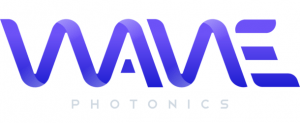 Wave Photonics is leading an Innovate UK–funded project alongside partners, Alter Technology TUV NORD UK, Senko Advanced Components, University of Southampton and University of Bristol, to develop packaging solutions for Quantum Photonic Integrated Circuits (QPICs). Quantum News Briefs summarizes the announcement on the WAVE site for readers.
Wave Photonics is leading an Innovate UK–funded project alongside partners, Alter Technology TUV NORD UK, Senko Advanced Components, University of Southampton and University of Bristol, to develop packaging solutions for Quantum Photonic Integrated Circuits (QPICs). Quantum News Briefs summarizes the announcement on the WAVE site for readers.
Quantum Photonic Integrated Circuit PACkaging (QPICPAC) project will develop a template–driven approach to minimise custom development requirements and costs for quantum technology companies.
QPICs are chips made using the same fabrication techniques that are used to make semiconductor chips for computers, but to make circuits that manipulate light. These typesof chips are already being used for energy–efficient transceivers for data centres, LiDAR forautonomous vehicles and sensors for healthcare applications, but they are especially useful
for quantum technologies.
Typically, demonstrations of quantum photonics technologies like trapped ion computing or quantum secure communication use bulky, expensive optical setups which aren’t suitable for mass production. As QPICs are made using scalable semiconductor fabrication processes, they can be made reliably at high volume and are key for making quantum technologies manufacturable at scale. However, the route from a chip design to a finished product is not simple. A key issue is packaging – getting light on and off the chip, as well as making sure that the end device is suitable for the environment in which it will be deployed. Currently, this process is slower to develop and more expensive than it needs to be.
The goal of the QPICPAC project is to develop design templates and components to minimise the amount of bespoke work needed, meaning that packaging will be simpler and more affordable for those seeking to exploit QPIC technologies.
Quantum Dice, a UK start–up developing QPIC–based quantum random number generators will be acting as a trial customer for the project to provide insights into the needs of quantum photonics companies intending to make products in high volume.
****(*
Researchers from Riken demonstrate full control of a three-qubit system
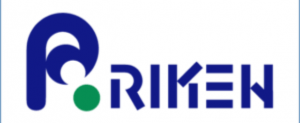 Researchers from RIKEN in Japan have made a significant advancement toward large-scale quantum computing by demonstrating error correction in a three-qubit silicon-based quantum computing device, . This research, which was published in Nature, could help make practical quantum computers a reality. Quantum News Briefs summarizes the announcement here. Researchers have previously demonstrated control of two qubits, but that is not enough for error correction, which requires a three-qubit system.
Researchers from RIKEN in Japan have made a significant advancement toward large-scale quantum computing by demonstrating error correction in a three-qubit silicon-based quantum computing device, . This research, which was published in Nature, could help make practical quantum computers a reality. Quantum News Briefs summarizes the announcement here. Researchers have previously demonstrated control of two qubits, but that is not enough for error correction, which requires a three-qubit system.
Researchers at the RIKEN Center for Emergent Matter Science and the RIKEN Center for Quantum Computing, the group achieved this feat, demonstrating full control of a three-qubit system (one of the largest qubit systems in silicon), thus providing a prototype for the first time of quantum error correction in silicon. They achieved this by implementing a three-qubit Toffoli-type quantum gate.
According to Seigo Tarucha, the leader of the research group, “Our next step will be to scale up the system. We think scaling up is the next step. For that, it would be nice to work with semiconductor industry groups capable of manufacturing silicon-based quantum devices on a large scale.
Silicon-based quantum technology, which has just recently started to be developed, is known to offer an advantage in that it uses a semiconductor nanostructure comparable to what is frequently used to integrate billions of transistors on a compact chip, and hence potentially benefits from existing manufacturing technology.
****
New measurements point to silicon as a major contributor to performance limitations in superconducting quantum processors
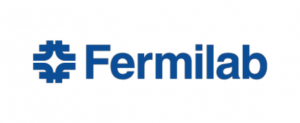 Researchers at the Superconducting Quantum Materials and Systems Center, hosted by the U.S. Department of Energy’s Fermi National Accelerator Laboratory, demonstrated that silicon substrates could be detrimental to the performance of quantum processors. SQMS Center scientists have measured silicon’s effect on the lifespan of qubits with parts-per-billion precision. These findings have been published in Physical Review Applied
Researchers at the Superconducting Quantum Materials and Systems Center, hosted by the U.S. Department of Energy’s Fermi National Accelerator Laboratory, demonstrated that silicon substrates could be detrimental to the performance of quantum processors. SQMS Center scientists have measured silicon’s effect on the lifespan of qubits with parts-per-billion precision. These findings have been published in Physical Review Applied
Qubits require near-perfect conditions to maintain the integrity of their quantum state, and certain material properties can decrease the qubit lifespan. This phenomenon, called quantum decoherence, is a critical obstacle to overcome to operate quantum processors.
SQMS Center researchers have directly measured the loss tangent—a material’s ability to absorb electromagnetic energy—of high-resistivity silicon. These measurements were performed at temperatures only hundreds of a degree above absolute zero. These cold temperatures offer the right conditions for superconducting transmon qubits to operate.
Companies developing quantum computers based on quantum computing chips often use silicon as a substrate. SQMS Center studies highlight the importance of understanding which of silicon’s properties have negative effects. This research also helps define specifications for silicon that would ensure that substrates are useful. Another option is to substitute the silicon with sapphire or another less lossy material.
“Sapphire, in principle, is like a perfect insulator—so much better than silicon,” said Checchin. “Even sapphire has some losses at really low temperatures. In general, you would like to have a substrate that is lossless.”
*****
Sandra K. Helsel, Ph.D. has been researching and reporting on frontier technologies since 1990. She has her Ph.D. from the University of Arizona.






















